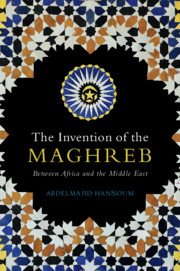Book contents
- The Invention of the Maghreb
- The Invention of the Maghreb
- Copyright page
- Dedication
- Contents
- Maps
- Tables
- Acknowledgments
- Introduction
- 1 Geographic Imagination and Cartographic Power
- 2 The Trace and Its Narratives
- 3 Language, Race, and Territory
- 4 Naming and Historical Narratives
- 5 Strategies for the Present
- 6 Cracks
- Postscript
- Bibliography
- Index
4 - Naming and Historical Narratives
Published online by Cambridge University Press: 13 May 2021
- The Invention of the Maghreb
- The Invention of the Maghreb
- Copyright page
- Dedication
- Contents
- Maps
- Tables
- Acknowledgments
- Introduction
- 1 Geographic Imagination and Cartographic Power
- 2 The Trace and Its Narratives
- 3 Language, Race, and Territory
- 4 Naming and Historical Narratives
- 5 Strategies for the Present
- 6 Cracks
- Postscript
- Bibliography
- Index
Summary
This chapter looks at the dynamics and politics of names and naming in the region. It also looks at the foundational historical narratives that created the concept of the Maghreb. Even though colonial authors invented several names to designate the region, two names prevailed at the height of colonial rule in the 1930s: North Africa and the Maghreb. The historiography of the region also isolated it in such a way as to make it distinct from the west part of Africa and the east part that by 1916 became known, in the context of British rule, as the Middle East. But the process of creating the Middle East and more specifically Egypt as separate started with the expedition of Napoleon, whereas the invention of the Maghreb was undertaken intensively after 1870 with the founding of a historiographic state that was politically expansionist and culturally hegemonic. The chapter also examines how West Africa was isolated from the area of the Maghreb.
- Type
- Chapter
- Information
- The Invention of the MaghrebBetween Africa and the Middle East, pp. 170 - 205Publisher: Cambridge University PressPrint publication year: 2021

